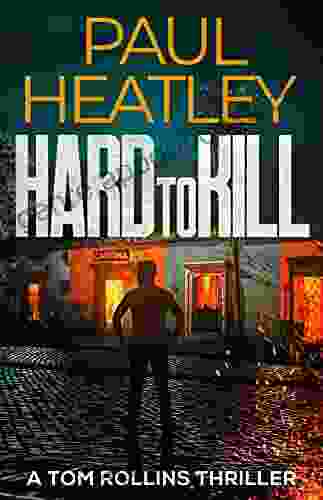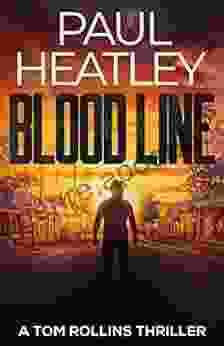20 Instructional Strategies That Engage The Brain: A Comprehensive Guide for Educators

In an era where information is readily accessible at our fingertips, the role of educators has evolved from content providers to facilitators of meaningful learning experiences. To effectively engage students in the 21st century, it is imperative to embrace instructional strategies that align with the way our brains learn and process information.
This comprehensive guide introduces 20 innovative and evidence-based instructional strategies that ignite student engagement, foster retention, and cultivate critical thinking skills. By incorporating these strategies into your lesson planning, you will create a dynamic and transformative learning environment for your students.
4.3 out of 5
| Language | : | English |
| File size | : | 3767 KB |
| Text-to-Speech | : | Enabled |
| Enhanced typesetting | : | Enabled |
| Word Wise | : | Enabled |
| Print length | : | 194 pages |
| Lending | : | Enabled |
| Screen Reader | : | Supported |
Chapter 1: The Science of Brain-Based Learning
Understanding how the brain learns is fundamental to designing effective instructional strategies. This chapter explores the latest research in educational psychology and cognitive neuroscience, revealing the brain's remarkable capacity for learning and the key principles that guide its development.
Chapter 2: Active Learning vs. Passive Learning
Active learning involves students in the learning process, fostering deeper understanding and long-term retention. This chapter compares active and passive learning approaches, highlighting the benefits of engaging students in hands-on activities, problem-solving tasks, and meaningful discussions.
Chapter 3: Visual Thinking Strategies
Visual thinking strategies help students make connections between concepts, improve comprehension, and develop problem-solving skills. This chapter introduces powerful techniques such as mind mapping, graphic organizers, and visual storytelling, guiding educators on how to incorporate these strategies into their lessons.
Chapter 4: Cooperative Learning
By collaborating with peers, students develop essential communication, interpersonal, and problem-solving skills. This chapter explores various cooperative learning models, including group projects, peer tutoring, and jigsaw activities, demonstrating their effectiveness in promoting student engagement and academic achievement.
Chapter 5: Technology-Enhanced Learning
Integrating technology into instruction can enhance student motivation, provide personalized learning experiences, and connect students to global resources. This chapter discusses the responsible use of technology in the classroom, including blended learning models, educational games, and online simulations.
Chapter 6: Gamification
Gamification incorporates game elements into learning tasks, making them more engaging and motivating. This chapter introduces principles of game design, shares practical examples of gamified lessons, and explores its potential to improve student participation and learning outcomes.
Chapter 7: Project-Based Learning
Project-based learning provides students with opportunities to apply their knowledge and develop real-world skills. This chapter guides educators on how to design and implement effective projects, fostering student creativity, collaboration, and critical thinking abilities.
Chapter 8: Inquiry-Based Learning
Inquiry-based learning encourages students to question, investigate, and form their own s. This chapter explores different models of inquiry-based instruction, including problem-based learning, case studies, and scientific inquiry, highlighting their role in developing critical thinking and lifelong learning skills.
Chapter 9: Differentiated Instruction
To meet the needs of diverse learners, differentiated instruction provides personalized learning experiences. This chapter discusses strategies for differentiating instruction based on student readiness, learning styles, and interests, ensuring that all students have access to meaningful learning opportunities.
Chapter 10: Universal Design for Learning
Universal Design for Learning (UDL) ensures that learning environments and materials are accessible to all students, regardless of their disabilities or learning differences. This chapter introduces the UDL framework, providing practical strategies for creating inclusive and equitable classrooms.
Chapter 11: Brain Breaks
Brain breaks provide students with brief respites from sustained cognitive activity, allowing them to refresh their attention and improve their learning capacity. This chapter explores the benefits of brain breaks, shares engaging activities, and discusses strategies for incorporating them into your lesson plans.
Chapter 12: Mindfulness in the Classroom
Mindfulness practices help students develop self-awareness, regulate their emotions, and improve their attention span. This chapter introduces mindfulness techniques tailored for the classroom, guiding educators on how to integrate mindfulness into their daily routines and curriculum.
Chapter 13: Technology for Inclusive Education
Technology can be a powerful tool for promoting equity and inclusion in the classroom. This chapter explores assistive technologies, adaptive learning software, and online resources that support students with disabilities and English learners, enabling them to fully participate in learning.
Chapter 14: Culturally Responsive Teaching
Culturally responsive teaching acknowledges and respects the cultural backgrounds and experiences of all students. This chapter provides strategies for creating culturally inclusive learning environments, incorporating diverse perspectives into the curriculum, and building strong relationships with students from all cultural backgrounds.
Chapter 15: Social and Emotional Learning
Social and emotional learning (SEL) develops students' self-awareness, self-regulation, and interpersonal skills. This chapter introduces evidence-based SEL programs and activities that foster emotional intelligence, resilience, and positive relationships in the classroom and beyond.
Chapter 16: Assessment for Learning
Assessment is not just about measuring student achievement; it can also be a powerful tool for learning. This chapter explores assessment for learning strategies that provide students with ongoing feedback, help them reflect on their progress, and identify areas for improvement.
Chapter 17: Technology for Assessment
Technology offers a range of assessment tools that can provide real-time data, personalize feedback, and streamline the grading process. This chapter discusses the benefits of using technology for assessment, including online quizzes, digital portfolios, and interactive simulations.
Chapter 18: The Role of the Teacher in the 21st Century
The role of the teacher has evolved in the 21st century from knowledge dispenser to learning facilitator. This chapter redefines the teacher's role in creating dynamic learning environments, coaching students, and fostering a lifelong love of learning.
Chapter 19: Innovation and the Future of Education
Education is constantly evolving, and educators need to be at the forefront of innovation. This chapter explores emerging trends in education, including personalized learning, adaptive technologies, and artificial intelligence, and discusses the implications for the future of teaching and learning.
Chapter 20:
Effective instructional strategies are the cornerstone of engaging and transformative learning experiences. By embracing the strategies outlined in this guide,
4.3 out of 5
| Language | : | English |
| File size | : | 3767 KB |
| Text-to-Speech | : | Enabled |
| Enhanced typesetting | : | Enabled |
| Word Wise | : | Enabled |
| Print length | : | 194 pages |
| Lending | : | Enabled |
| Screen Reader | : | Supported |
Do you want to contribute by writing guest posts on this blog?
Please contact us and send us a resume of previous articles that you have written.
 Book
Book Novel
Novel Page
Page Chapter
Chapter Text
Text Story
Story Genre
Genre Reader
Reader Library
Library Paperback
Paperback E-book
E-book Magazine
Magazine Newspaper
Newspaper Paragraph
Paragraph Sentence
Sentence Bookmark
Bookmark Shelf
Shelf Glossary
Glossary Bibliography
Bibliography Foreword
Foreword Preface
Preface Synopsis
Synopsis Annotation
Annotation Footnote
Footnote Manuscript
Manuscript Scroll
Scroll Codex
Codex Tome
Tome Bestseller
Bestseller Classics
Classics Library card
Library card Narrative
Narrative Biography
Biography Autobiography
Autobiography Memoir
Memoir Reference
Reference Encyclopedia
Encyclopedia Robyn Cairns
Robyn Cairns David Baddiel
David Baddiel Robert Kelchen
Robert Kelchen Shayla Raquel
Shayla Raquel Raja Swamy
Raja Swamy Victor Lederer
Victor Lederer Sarah Tate
Sarah Tate Nancy Frey
Nancy Frey James Claflin
James Claflin Seth Friedman
Seth Friedman Wendi Tooth
Wendi Tooth Kim Brake
Kim Brake Mahanidhi Swami
Mahanidhi Swami Andrew Sanders
Andrew Sanders Marilynn Ham
Marilynn Ham Richard Howells
Richard Howells Kim Izzo
Kim Izzo Malachy Mccourt
Malachy Mccourt Shana Abe
Shana Abe Tony Newton
Tony Newton
Light bulbAdvertise smarter! Our strategic ad space ensures maximum exposure. Reserve your spot today!

 Connor MitchellFrom Parchment to Dust: Exploring the Enigmatic World of Ancient Libraries
Connor MitchellFrom Parchment to Dust: Exploring the Enigmatic World of Ancient Libraries Ivan TurgenevFollow ·3k
Ivan TurgenevFollow ·3k Dan BrownFollow ·4.9k
Dan BrownFollow ·4.9k Edmund HayesFollow ·17k
Edmund HayesFollow ·17k Harry HayesFollow ·8.3k
Harry HayesFollow ·8.3k Israel BellFollow ·9.5k
Israel BellFollow ·9.5k Ed CooperFollow ·13.8k
Ed CooperFollow ·13.8k Arthur C. ClarkeFollow ·6.2k
Arthur C. ClarkeFollow ·6.2k Gustavo CoxFollow ·18.8k
Gustavo CoxFollow ·18.8k

 Finn Cox
Finn CoxCarmen Suite For Flute Quartet (G Alto Flute) ( Carmen...
Experience the Magic of...

 Andy Cole
Andy ColeUncover Hidden Truths: A Comprehensive Guide to Detecting...
: The Silent...

 Ken Simmons
Ken SimmonsUnleash Your Potential: Transform Frustration and...
Are you tired of feeling...

 Rick Nelson
Rick NelsonHard To Kill: A Gripping Thriller That Will Keep You on...
Tom Rollins is a...

 Ivan Turner
Ivan TurnerUnleash the Power of Your Breath: Discover Breath...
In the tapestry of life, where stress and...
4.3 out of 5
| Language | : | English |
| File size | : | 3767 KB |
| Text-to-Speech | : | Enabled |
| Enhanced typesetting | : | Enabled |
| Word Wise | : | Enabled |
| Print length | : | 194 pages |
| Lending | : | Enabled |
| Screen Reader | : | Supported |












